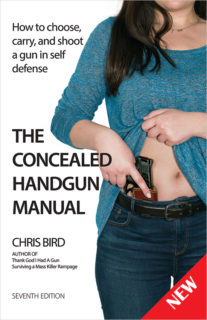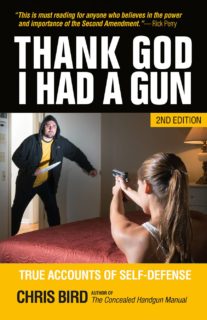Situational Awareness
What is Situational Awareness?What is Situational Awareness?
Ed Lovette who taught situational awareness as a CIA officer defines it as a state of general alertness which allows you to take the element of surprise away from a threat to your personal security.
“We don’t want to be surprised,” he says.
I met Lovette when he was teaching situational awareness during a mass shooter/killer class at Tactical Defense Institute in Ohio. He is author of Defensive Living, a book he co-wrote with Dave Spaulding, a twenty-eight year veteran law-enforcement officer.
Criminals are opportunists. They look for an easy target that has what they want—cash or valuables that can be converted into cash. The first step in taking charge of your own security is to become a less-attractive target. As Clint Smith, director of Thunder Ranch shooting school, says: “If you look like food, you will be eaten.”
All self-defense instructors I have spoken to agree that a confident, alert demeanor will discourage most opportunistic criminals from choosing you as a target. If they do, you should have some warning and be able to take evasive action.
Situational awareness is not sexy. It doesn’t hold the satisfaction of choosing a new gun or shooting figure targets, bowling pins, or steel plates on the range. It is boring and it is hard work mentally. Some of your friends will call you paranoid. They live in the fantasy world where they believe that bad things won’t happen to them and that the police will protect them. However, being constantly aware of what is going on around you is the single most important factor in staying safe whether you are armed or unarmed.
Danger signs are anything that warns us that we may have a problem. They may be visual, auditory, or intuitive. As Gavin de Becker, author of The Gift of Fear, puts it: knowing, without knowing why.
“Women are a lot better at this (intuitive stuff) than the guys,” says Lovette. Pay attention if the women with you say something is not right.
John Long, a barber from Shreveport, is one of the civilians I have met who is most attuned to signs of trouble and is always alert. He is very adept at spotting potential robbers. Anyone who is looking around as he approaches the door is immediately under suspicion. Long says criminals intent on robbery tend to give themselves away by their body language. They are usually extremely nervous and antsy, and they look around a lot. In addition to always keeping his eyes open for potential trouble, Long has learned to trust his instincts.
He recalled one occasion when he ignored the warning signs.
An insurance office occupied the store next to Long’s in the strip center on 70th Street. Long was outside talking to a customer when he noticed two men, both wearing jackets, and both with their hands in their pockets as it was a cold day.
“They were walking in a manner that catches my attention, like leaning forward and looking around, glancing quickly,” says Long. “There was something in me that said, ‘Something’s wrong here. Check it out.’ But just as I thought that, a customer pulls up for a haircut, and I’m thinking to myself: ‘Wait a minute, maybe I’m over-reacting. Maybe I’m letting my imagination get the better of me.’”
Long goes into the shop and gives the customer a haircut. When the customer has left, a woman runs in and tells him she has been robbed. The woman was the only employee in the insurance office, and she was pregnant. The men had robbed her then locked her in the bathroom. She had just managed to escape and, although she was not injured, she was shaken up.
“When you’ve got an instinct or a feeling something’s wrong, don’t simply dismiss it, check it out. It could be something. That’s what I’ve learned: to always trust your instincts on something like that.
“I felt guilty because I essentially had turned my back on my instincts that said, ‘Do something,’ and my brain told me that there’s probably nothing there, and I was over-reacting. I felt guilty about that for a long time.”
Danger signs can also be visual or auditory. Greg Ellifritz in his blog, Active Response Training, points out that often people do not recognize the sound of gun fire for what it is. As in the mass shooting in Las Vegas in 2017, many people thought the sound was fireworks connected to the outdoor concert. At Virginia Tech, many people thought the sound of gun fire was a nail gun being used on a nearby construction site. At Columbine, one teacher thought the shooters were making a video using toy guns. It wasn’t until one of them started shooting at her that she realized her mistake.
Be particularly alert when using automated teller machines. Many people have been robbed at gunpoint and forced to give up their personal identification numbers so their accounts can be looted. Sometimes they have been killed during these robberies.
San Antonio construction contractor Joe Ince, 38, was lead trumpeter in the Trinity Baptist Church orchestra. He was returning home from music practice when he stopped to make a paycheck deposit at a bank teller machine. After putting the check into the machine, Ince was abducted at gun point by a seventeen-year-old youth and a thirteen-year-old girl. He was driven off in his own extended-cab pickup with the girl holding a .22 revolver to his head. Ince did not resist his abductors.
The pair forced him to give up his wallet, his ATM card, and his account access number. They drove to several teller machines and made one withdrawal. The youth grabbed the gun and shot Ince in the head mortally wounding him.
Perhaps the biggest impediment to situational awareness these days is the cell phone. Yes, it is useful to call 9-1-1, but whether you are in your vehicle or on foot, if you are talking or texting with your cell phone, you are not paying attention to what is going on around you. Some years ago in San Antonio a woman who was talking on her cell phone stepped off the curb without looking and walked into a bus. It killed her.
If you have to make or take a call on your cell phone while in public, find a wall and put your back to it, then scan left, right and in front of you before making or taking the call.
Pay attention to everything going on around you. However, it is not enough to tell someone to be alert and stay safe. You must tell them how to be alert and how to recognize the danger signs.
“We have to know what to look for,” Lovette says.
The goal is to be able to use your awareness to detect, assess, avoid, evade, counter, and prevail in the encounter.
“Doing this requires a lot of discipline,” he says.
Spend a few minutes each day just sitting and taking in what your senses are telling you. What can you see? What can you hear? What can you smell? What are you feeling? Focus on what is going on around you. It may be in your car before you drive to work or when you are outside getting a breath of fresh air. If you are alone you can articulate out loud what you are taking in. This exercise will improve your instincts.
Mental conditioning means working these exercises into your routine. Bill Davison of Tac Pro Shooting Center in North Texas recommends continuously asking yourself: “What happens if the fight starts now?” This gets you thinking about a plan to fight back. What are your closest exits, where is the nearest cover, and how are you going to get there.
Another exercise invented by the late Lt.-Col. Jeff Cooper, one of the leaders in self defense and father of the “New Technique” of combat shooting, was one of the first people to teach situational awareness. Cooper suggested a game of Xs and Os. Every time someone approaches you without being seen, you score an X. If you see them before they get close, you get an O. Try to minimize the Xs and increase the Os. Mental preparation plus mental conditioning equals situational awareness.
Lovette says we should be aware of everything inside our twenty-one-foot personal safety zone. He credits the twenty-one feet or seven yards rule to Dennis Tueller, a lieutenant with the Salt Lake City Police Department. It is based on the distance an attacker armed with a knife can cover in the 1.5 seconds it takes to draw a handgun and fire one shot. It is a rule of thumb, not an exact time and distance.
Always keep the edge. Be prepared, have a plan, and do something. “Doing something may be being the best witness you can be,” Lovette says.
President Theodore Roosevelt put it this way: “In any moment of decision, the best thing you can do is the right thing, the next best thing is the wrong thing, and the worst thing you can do is nothing.”
More about Situational Awareness next month.



